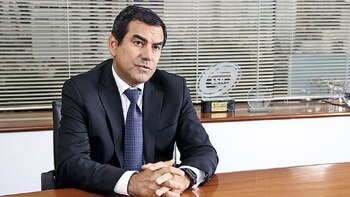
The president of the National Confederation of Private Business Institutions (Confiep), Oscar Caipo, considered that it is necessary to change the formation of the cabinet of ministers, because they would not be focusing on the country's main problems, such as employment generation and social conflicts generated by mining activities.
“We have seen with great concern how a climate of social conflict has been generated, I would say at levels that we have not seen in many years, but the most serious thing is that it gives the impression that they let us reach this level. One example is the problem of Cuajone, that only after more than 40 days a delegation went to Moquegua,” he said in an interview with RPP Noticias.
He also referred to the increase in food from the basic basket. Thus, he said that although this is a problem that affects everyone, in Peru the Government took 45 days to address this problem.
“An almost irrepressible situation has been created, so the question is why the government is reacting late. Does the issue have to do with lack of capacity? , does it have to do with the distraction to attend to the very crises that they themselves are generating? , to address the problems of lack of transparency in these months?” , he said.
“People must judge the Government by its intentions, and what we do not see is that the Government is focused on solving the main problems, and one of them is employment and income levels, which will not be improved by increasing the minimum living wage in an economically active population. of millions of people, 77% in informality and that will only benefit 4% of the working class,” he added.

INFLATION IN PERU PEAKED IN MARCH
According to data from the National Institute of Statistics and Informatics (INEI), the Consumer Price Index in Lima grew 1.48% in March, this being the highest monthly variation since February 1996. As a result, there has been the largest increase in prices in 26 years, driven by higher prices for food, education and transport, INEI reported.
The rise in fuel and lubricant prices, and the amount of tickets impacted the inflationary result. INEi also emphasizes that the result for March is “the highest variation in the first quarter of the year (January 0.04% and February 0.31%)”, and confirms that it is “likewise, a higher result since February 1996 which was 1.53%”.
Over the past 12 months, price growth in the country reached 6.82%, well above the inflation target range set by the Central Reserve Bank of Peru, between 1% and 3% annual inflation.

The Institute of Statistics also explains that annualized inflation from April 2021 to March 2022 “is significantly higher than the annual evolution observed in the same period of the last three years”.
However, in March 2021 annualized inflation was 2.6%, while in the same month in 2020 and 2019 it stood at 1.82% and 2.25% respectively.
In 2021, Peru closed with inflation of 6.43%, more than double the 3% ceiling set by the Central Bank, amid electoral tensions and the covid-19 pandemic.
Finally, inflation reached its monthly peak last year in July, when prices rose 1.01% to coincide with the coming to power of leftist president Pedro Castillo. In 2020, inflation in Peru was 1.97%, higher than 1.90% in 2019.
KEEP READING
Últimas Noticias
Debanhi Escobar: they secured the motel where she was found lifeless in a cistern

The oldest person in the world died at the age of 119

Macabre find in CDMX: they left a body bagged and tied in a taxi
The eagles of America will face Manchester City in a duel of legends. Here are the details

Why is it good to bring dogs out to know the world when they are puppies




